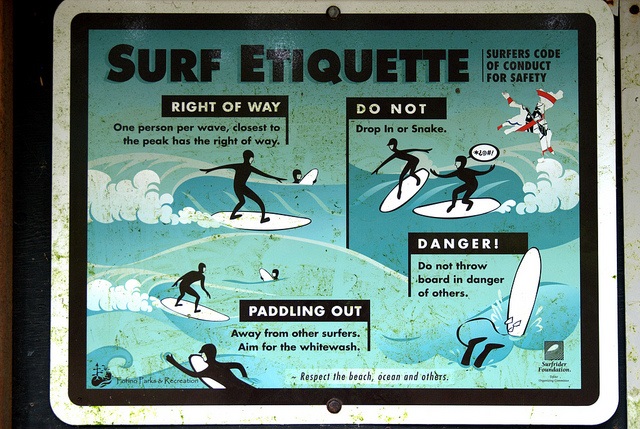Whether you think of wave-riding as merely a humble sport, or hold it rather to be a profoundly spiritual undertaking that facilitates communion with nature and shit, surfing has neither stern referee nor supreme apostolic authority to settle disputes and pass judgement. What it does have, though, is a set of unofficial but generally agreed-upon rules, and those surfers who disobey them will assuredly go to hell. They are all that stand between the ever-growing wave-ravenous masses and utter chaos, so it is very important that you learn them; in fact, if you’re learning to surf, surf etiquette is the single most important thing you should know before venturing forth into the salty tumult. Fail to obey these simple rules and you will incur the wrath of your fellow surfers – and rightly so.

Surf somewhere suited to your ability
Knowing where to surf is an often overlooked part of surf etiquette. In the early stages of your surfing career, unless the surf’s extremely small, you should stick to the shallows and practise standing up on waves that have already broken. Joining the more experienced surfers in the “line-up”, where the waves start to break, will be irritating for them and of little benefit to you; you’ll catch far fewer waves and be more likely to fall on the few you do catch. When you do progress beyond the white-water, to begin with keep away from the main pack where the better surfers are sitting. Be honest with yourself about your ability, and don’t paddle out if it’s big and barrelling and you’re not ready for it. At many beaches there’s a peak where the waves are gentler and clearly better suited to beginners; head for this one. If in doubt, consult lifeguards or other surfers.





